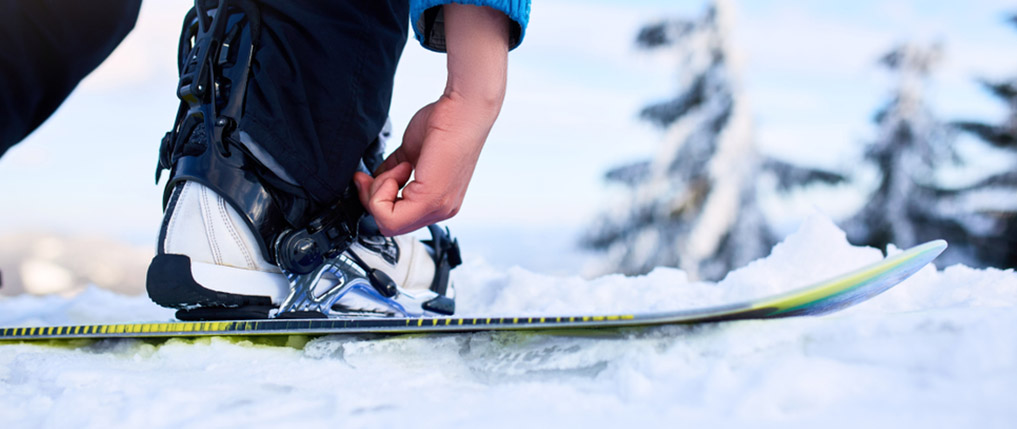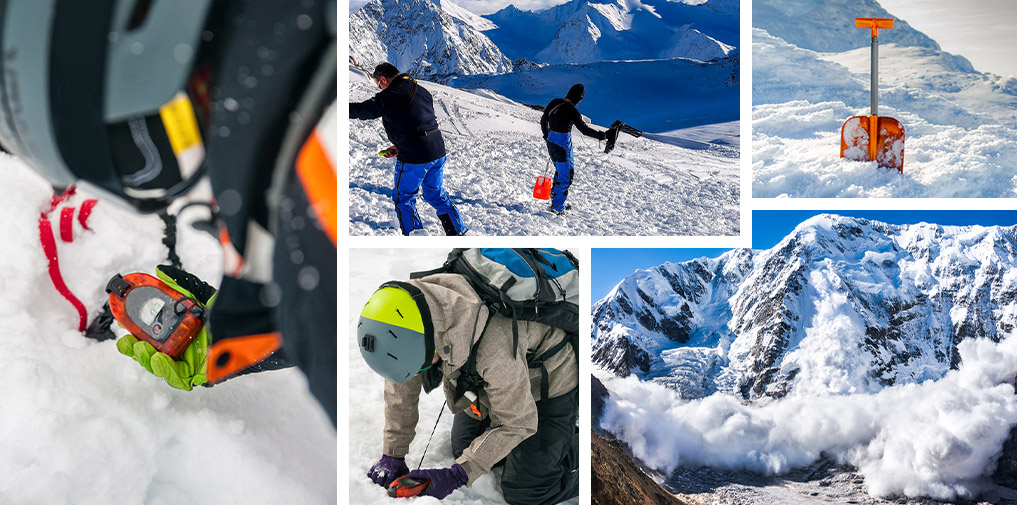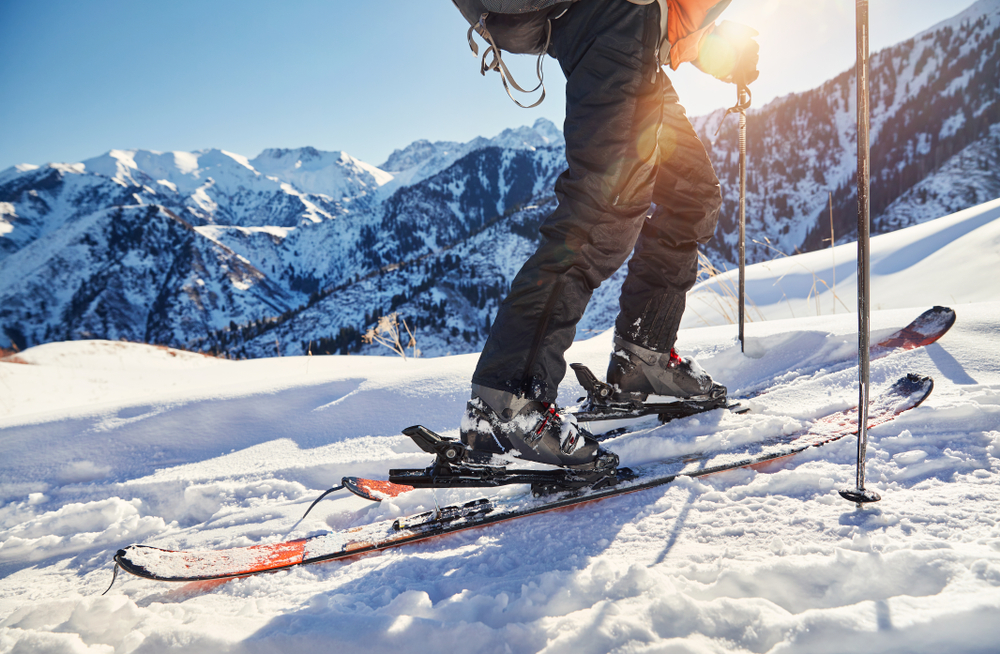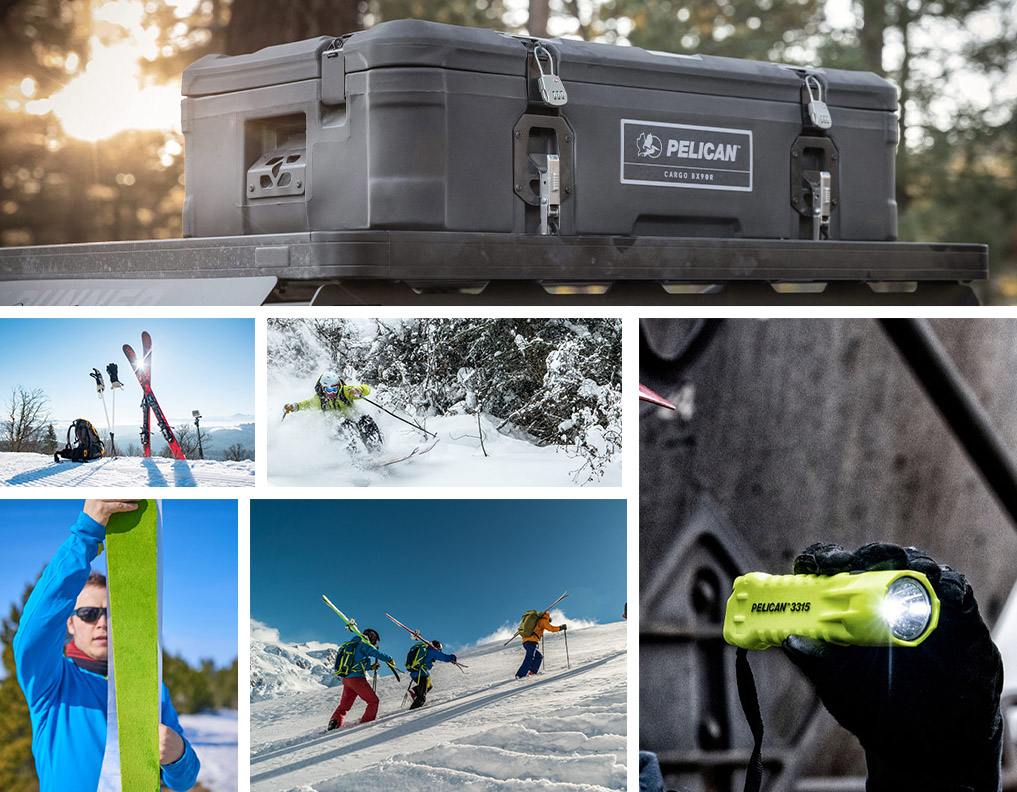The Ultimate Guide to Backcountry Skiing and Snowboarding
November 19, 2020

We get it! You’ve grown bored of waiting for lift lines and want to get out in nature more. With untracked and uncarved banks of freshly fallen snow, the beautiful backcountry landscape is calling to you to come and play. But you can’t merely go on a backcountry skiing or snowboarding trip without knowing precisely what you’re doing. It helps to understand how to travel responsibly in the backcountry (and even avoid the very real threat of avalanches).
So, before you go heading out to the backcountry wilderness and strapping on your skis or board, you need to attain the proper gear and knowledge. Here’s your ultimate guide to backcountry skiing and snowboarding.
Understand Avalanches and Winter Survival Skills
First things first: You need to understand how to detect signs of avalanches and know winter survival skills. When you’re backcountry skiing or snowboarding, you’re essentially out in the wilderness without the maintained trails you find at a ski resort. With no lodge or ski patrol, it’s up to you to learn how to keep yourself safe from avalanches and other winter-related dangers like hypothermia.
To prepare, enroll in a formal avalanche safety training course endorsed by the National Avalanche Association. These classes will teach you the basic signs of avalanche dangers, how to use a transceiver, shovel and probe to rescue companions and winter survival skills to keep warm if injured and awaiting search and rescue (SAR). It will also teach you where to access local avalanche bulletins and weather reports to avoid avalanche-prone areas and conditions.

Besides winter survival skills, you really should understand the basics, like how to read a topographic map and Leave No Trace principles.
Evaluate Your Fitness and Skill Levels
Backcountry skiing and snowboarding require a certain level of endurance. For starters, you need to be able to climb uphill in the snow, which can be challenging in itself. And then you need to be able to ski or get back down. So before you attempt a backcountry excursion, evaluate your fitness level and skill levels, even if you’re an avid skier or snowboarder. For those who are reasonably fit, a moderate backcountry tour is a good starting point. From there, you can take on larger and longer excursions, but it’s best to evaluate what you’re capable of first.
Before you head off on a backcountry skiing or backcountry snowboarding adventure, evaluate your skill level at a resort. While backcountry adventures are for the more experienced, even an enthusiast who goes several times a winter can find themselves out of touch. So make sure your skill levels are up to snuff beforehand.

Ensure you can complete an intermediate run or take a few lessons at the resort if you need. Unlike well-maintained and groomed trails, the backcountry presents unexpected challenges, such as different snow conditions, unmarked slopes and various terrains that you need to navigate safely. Plus, you’ll get familiar with using touring binding when trekking uphill, as well as putting on climbing skins and performing uphill kick turns. Take a backcountry touring class, especially if it’s your first time. A backcountry touring class can teach you all of these things in order to have a more enjoyable experience.
Essential Backcountry Skiing and Snowboarding Gear
Backcountry skiing and snowboarding gear can help you stay safe from avalanches and generally make your experience more fun. Here are some must-have equipment and gear you might want to consider.
Avalanche Safety Equipment
One of the top must-have backcountry equipment you and your companions need is avalanche safety equipment. Make sure each person carries these items and knows how to use them:

- Avalanche Transceiver – This specific transceiver sends a signal to nearby transceivers (i.e., your rescue party).
- Avalanche Shovel – Not only is this backcountry-specific shovel essential for digging out avalanche victims, but it’s used for testing snow conditions.
- Avalanche Probe – Essentially a collapsible pole, the avalanche probe can help you find buried victims during a search and rescue.
- Avalanche Airbags – These innovative and super useful devices can be deployed via ripcord, inflating into an airbag that lifts you to the top of an avalanche, allowing companions and SAR to locate you ASAP.
Backcountry Skiing and Snowboarding Gear
Aside from understanding the basics of avalanche safety and evaluating your fitness level, you need to acquire the proper gear for backcountry skiing and backcountry snowboarding. While you can get away with your existing equipment, it pays to get the right gear, which will only improve your experience. Essentially, backcountry gear offers a lighter material and more outstanding performance to help you easily navigate a wilder terrain and long-distance hikes uphill sans lift. Broken down for both skiers and snowboarders, here is a list of backcountry-specific gear and equipment you should consider.

For Backcountry Skiing
Backcountry Skis – Starting out as a beginner backcountry skier, any decent pair of downhill skis will do just fine. The only disadvantage is that they can be rather heavy. Instead, once you take a liking to this new snowsport, invest in a pair of back-country specific skis that are designed with lighter material, making uphill climbs much easier. Available in a variety of widths and features such as rockers and cambers – the same as downhill skis – it’s important to find what suits your backcountry skiing style. Consider the balance of weight and performance in relation to snow conditions you might encounter.
Backcountry Ski Bindings – Unlike your typical bindings, backcountry bindings offer many advantages. For instance, they give you the ability to move your heels up and down as you trek the mountainous landscapes in the backcountry wilderness. Many backcountry skiers prefer alpine touring (AT) bindings that offer a way to lock your heels down once you reach the top of the hill so that you can ski down, making parallel turns similar to downhill skiing. As you come across AT bindings, you’ll notice they range from ultralight tech to heavier framed versions, similar to that of downhill bindings.
Backcountry Ski Boots – Your standard downhill boots are heavier than especially-designed backcountry skiing boots, so if you want to lose some pack weight, this is the way to go! Plus, backcountry ski boots offer a walking mode with pivoting upper cuffs that bring a certain comfort level while skinning and hiking. Of course, always make sure your backcountry bindings are compatible with your ski boots.
Backcountry Ski Boots – Your standard downhill boots are heavier than especially-designed backcountry skiing boots, so if you want to lose some pack weight, this is the way to go! Plus, backcountry ski boots offer a walking mode with pivoting upper cuffs that bring a certain comfort level while skinning and hiking. Of course, always make sure your backcountry bindings are compatible with your ski boots.
For Backcountry Snowboarding
Splitboard – Without the convenience of a resort lift, backcountry snowboarding requires lots of uphill climbing. For a more efficient climb, a splitboard is the way to go, instead of struggling with an awkwardly shaped snowboard on your backpack and having to change into snow boots. Essentially, a splitboard is a modified snowboard that has been turned into two free-heeled skis. Designed with special movable bindings, splitboards allow you to tour aside your backcountry skiing friends. Once you reach the top of the hill, you simply reassemble and reattach the splitboard into a single board and ride back down. Ultimately, a splitboard can reduce your gear and make a lighter load.
Splitboard Bindings – Lighter than your typical snowboard bindings, splitboard bindings are specifically designed for traveling uphill. On the other hand, many bindings already come with mounting plates that allow you to attach your existing bindings to your splitboard, which comes in super handy.
Snowboard Boots – While a standard set of snowboard boots is perfectly adequate for backcountry snowboarding, it’s also possible to upgrade. Choose a pair of snowboarding boots designed with extra supportive features like sturdier soles for trekking around the wilderness and a lateral stiffness.

General Backcountry Gear
Climbing Skins – Think of climbing skins like carpet pieces that attach to the bottom of your skis or splitboard, providing traction and support for uphill climbs. Once you’re ready to ski or ride back down, you simply detach them and store them away in your backpack. If you don’t want to carry your skis or snowboard, this is a must-have and handy piece of gear to own! Look for climbing skins for your specific ski model or larger rectangular widths that can be trimmed to custom fit your board.
Ski Poles – Whether you’re a skier or snowboarder, invest in a standard pair of fixed-length ski poles to use for riding downhill. If you can find adjustable ski poles, this works best, as they allow you to stretch your poles longer for skinning uphill and shortening them for your descent. Backcountry snowboarders can even take it a step further and choose a collapsible pole that can be securely lashed to the backpack.
Backpack – Hiking in the backcountry with skis or not, you need a quality backpack that can withstand the elements and carry the Ten Essentials like extra clothing, provisions and an LED flashlight for emergencies. As a beginner backcountry skier or snowboarder, any backpack will suffice, but if you end up enjoying your trips, invest in a backcountry-specific pack designed with durable waterproof and tear-resistant fabrics and reinforcements where your gear tends to rub. Also, make sure your backcountry pack offers a lash or bungee to secure a snow shovel and probes and straps for attaching skis, a snowboard and snowshoes.
Rooftop Cargo Carrier – If you haven’t noticed, between a big backcountry group of friends or acquaintances, you will have a ton of gear to carry on your trip. Instead of being in a cramped car, opt for a rooftop cargo carrier to keep all the snowboards and skis tucked away and protected from the elements. Plus, you’ll appreciate keeping the cold snow out of your car once you pack it in and return home from your journey.
Planning a Backcountry Tour
When planning a backcountry skiing or snowboarding trip, there are a few things you must keep in mind.

Go with an Experienced Group – Ask friends or find an online forum to build a group of experienced skiers or boarders who are willing to accompany you on a more chilled backcountry trip as you learn the ropes. They can teach you a lot and help you avoid hidden dangers. Just remember to speak up and don’t be afraid to ask for help.
Check the Avalanche Forecast – Before planning your backcountry trip, determine if there are any hazards in the snowpack by checking the avalanche forecast. You can choose to avoid slopes above a tree line or other types of terrain that could prove dangerous.
Pick a Destination – As a beginner backcountry skier or boarder, pick an easier destination that requires moderate skiing and a lower risk of avalanches. After all, you'll be more focused on getting used to new gear and practicing techniques, like skinning and kick turns.
Find the Best Backcountry Tour for You – Ask your backcountry skiing and snowboarding friends for recommendations and suitable locations for a beginner like yourself. They usually offer the best word-of-mouth resources. Besides that, you can use guidebooks for essential tips and info like distance, elevations and levels of difficulty. Keep in mind, though, that a guidebook doesn’t offer the deep insight you might need. For that, browse backcountry websites like the Powder Project that offer recent reports, maps, high-res photos, detailed descriptions and even stats on the latest snow conditions.
Once you have all your backcountry gear and have decided on a plan as a group, inform a trusted relative or friend of your plans, listing where you’ll be going and when you plan to return – just in case of an emergency.
We hope this guide to backcountry skiing and snowboarding is useful and provides the information you need to get started on your first excursions. Stay safe and have fun shredding the slopes of the backcountry wilderness!

SIGN UP FOR EXCLUSIVE OFFERS
Sign up for our newsletter and get exclusive access to new product launches, special offers and much more.
RELATED BLOGS














